Sorted by date Results 51 - 75 of 83
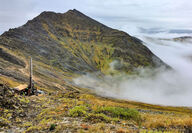
North of 60 Mining News recently spoke with Ramzi Fawaz, president and CEO of Ambler Metals LLC, a 50-50 joint venture between South32 Ltd. and Trilogy Metals Inc. to develop the rich mineral resources at the Upper Kobuk Mineral Projects in Alaska. In a candid conversation, Fawaz talks about what attracted him to Ambler Metals; the company's Alaska-based team and partnerships; the strategy for developing Arctic Mine and the other rich metals deposits at the Upper Kobuk Mineral...

In the midst of the COVID-19 outbreak and following the cancellation of the Alaska Miners Association 2020 Spring Convention in Fairbanks, AMA Executive Director Deantha Crockett takes the time to answer 20 questions on how the pandemic is affecting Alaska's mining sector and the association; Alaska's economy; state and federal mining policy; and due process for the Pebble Mine project. Q. Alaska Miners Association recently made the difficult decision to cancel its spring...

Following the pouring of the 4 millionth ounce of gold at the Pogo Mine, Northern Star Resources Ltd. Executive Chairman Bill Beament sat down with Mining News to talk about what this milestone means for the Interior Alaska gold mine; the Australia-based mining company's progress since acquiring Pogo; keys to Northern Star's success; and the vast mineral potential at Pogo and across Alaska. Q. Over the past decade, Northern Star Resources Ltd. has grown from a single-asset...
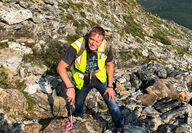
North of 60 Mining News is proud to introduce 20 questions for 2020. Over the course of this series, Mining News will interview mining and political leaders from Alaska, British Columbia, Northwest Territories, Nunavut and Yukon. Each interview will include 20 questions on mining, markets and doing business across Alaska and Canada's North. For the inaugural 20 questions for 2020, Mining News talks with Contango ORE Inc. CEO Rick Van Nieuwenhuyse, a longtime mining executive...
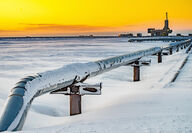
It was the vast petroleum reserves lying under what is now the Arctic Slope Regional Corp. (ASRC) region and the need to build a roughly 800-mile pipeline to deliver oil to global markets that prompted the need to settle aboriginal land claims in Alaska and led to the passage of the Alaska Native Claims Settlement Act, commonly referred to as ANCSA. Signed into law by U.S. President Richard Nixon in 1971 ANCSA involved a unique plan to organize Alaska Natives into 12 regional...

With more than half of Alaska's entire population living within its region, Cook Inlet Region Inc., more commonly known as CIRI, is the most metropolitan of the 12 landholding Alaska Native regional corporations. While CIRI has leveraged its urban position with retail developments such as Tikahtnu Commons, an enormous retail and entertainment center on the outskirts of Anchorage, the Southcentral Alaska regional corporation also has oil and gas, renewable energy and mining...

Stretching along roughly 400 miles of Alaska's southern coast – from the north end of the Southeast Alaska Panhandle near Icy Bay to the tip of the Kenai Peninsula near Homer – the Chugach Alaska Corp. region epitomizes Alaska beauty. This 10 million-acre region along Gulf of Alaska coastline is carved with majestic fjords and bays teeming with fish, birds and marine mammals, and vistas of mountains and glaciers rising above and cutting through dense forests of hemlock and...

Calista Corp., the Alaska Native Claims Settlement Act (ANCSA) regional corporation for the Yukon-Kuskokwim region of Southwest Alaska endeavors to set "the standard for economic success and corporate responsibility." This corporate vision is passed down to Calista's subsidiaries, a group of 30 companies that provide a broad range of services that include heavy equipment sales, rental and service; construction, including pilings and crane services; transportation and...

Calista Corp. and its 31,400 Yup'ik, Cup'ik and Athabascan shareholders are on the cusp of realizing the benefits that will come with the sustainable development of a mine at the 45-million-ounce Donlin Gold project on their land in the Yukon-Kuskokwim region of Southwest Alaska. With 39 million oz of gold in measured and indicated resources that average 2.24 grams per metric ton, and another 6 million oz in the inferred category averaging 2.02 g/t gold, Donlin Gold is truly a...

Home of the famed golden beaches of Nome that have captured the imagination of millions over the past 120 years, the Bering Straits Native Corporation (BSNC) region covers the Seward Peninsula and coastal lands arcing around the eastern and southern coast of the Norton Sound in the far western reaches of Alaska. While this region may be 300 miles beyond North America's highway system, it has served as a crossroads for human activity for at least 15 millennia and will continue...

The Koniag Inc. region covers the Kodiak Archipelago, a group of islands off the southern coast of mainland Alaska better known for their enormous brown bears than vast mineral potential. The Alutiiq people that arrived on Kodiak, Afognak and surrounding islands more than 7,500 years ago were skilled mariners who were deeply connected to the ocean for food and supplies. Over the millennia, these roaming seafarers settled into whaling and fishing villages that sheltered...

Aleut Corporation is committed to promoting economic opportunities for its more than 4,000 shareholders, while preserving the traditional culture and values developed from living in a ruggedly beautiful stretch of Alaska. The Alaska Peninsula and 167 named Aleutian Islands extending more than 1,000 miles off Southwest Alaska that make up the Aleut Corp. region form a border between the Pacific Ocean and Bering Sea. This geologically young island arc is part of the Pacific...

The Bristol Bay region is home to two resources that beyond a doubt earn the moniker "world-class" – an annual run of sockeye salmon that is second to none and Pebble, the largest undeveloped copper and gold deposits known to exist on Earth. These world-renowned resources, however, have stirred up controversy in this Oklahoma-sized region of Southwest Alaska, as many of the roughly 7,400 Bristol Bay residents are concerned that mining the copper, gold, molybdenum and other m...
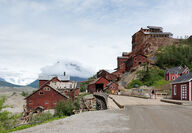
When it comes to managing its more than 1.5 million acres of land in a region of Southcentral Alaska renowned for its natural beauty, Copper River salmon, abundant wildlife and one of the richest lodes of copper to ever by mined on earth, Ahtna Inc. balances development for the prosperity of its current shareholders and preservation of resources for future generations. An important facet of this management is ensuring that there are plenty of plants, fish and wildlife to suppo...

With 12.5 million acres of land spanning Alaska's Interior, Doyon Ltd. is the largest private landholder in the state and one of the largest in the nation. For mining and mineral exploration companies, the rich mineral potential of these lands may be more impressive than the sheer size of the estate. This is because the Doyon region is a nearly Texas-sized swath of Interior Alaska that is renowned for its gold and a host of other metals, providing the regional corporation,...
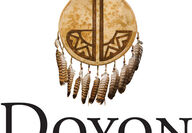
"Leader in all we do" is the corporate vision of Doyon, the Alaska Native Claims Settlement Act (ANCSA) regional corporation for Alaska's Interior. This high standard is motivated by a desire to see its shareholders flourish; traditional ways thrive; and ensure a rich inheritance for future generations of shareholders. This vision for excellence extends to Doyon's family of companies. These subsidiaries provide a wide range of services, including catering, facility...
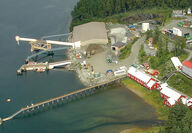
Seeking economic and cultural prosperity for its more than 22,000 Tlingit, Haida and Tsimshian shareholders while also looking to provide even greater benefits for future generations, Sealaska takes a balanced approach to developing the resources growing above and stored beneath its lands in Southeast Alaska. This does not mean the Southeast Alaska Native Claims Settlement Act (ANCSA) corporation shuns mining or other resource development in its region, a nearly 600-mile...
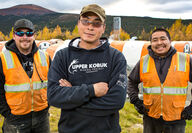
The Red Dog Mine has been a gamechanger for the more than 14,000 Iñupiat shareholders of NANA Corp., the Alaska Native Claims Settlement Act (ANCSA) regional corporation that owns the world-class Red Dog deposits in Northwest Alaska that are the source of around 5 percent of the world's new zinc supply each year. The revenues from shipping out more than 1 billion pounds of zinc annually, along with healthy portions of lead, silver and minor amounts of germanium, has served...

NANA's growing portfolio of businesses provide services to the mining, petroleum, commercial, and federal business sectors in 15 countries on six continents. NANA companies have been structured to evolve quickly-to embrace new technologies and game-changing capabilities-with the aim of exceeding the needs and expectations of NANA's customers. Here is a list of NANA companies that provide a variety of services to Alaska's mining sector: Tuuq Drilling, LLC provides drilling...
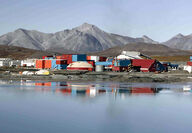
Alaska boasts what many consider the most successful Aboriginal land claims settlement on Earth – a solution that has not only turned out to be a cultural success, but a brilliant business move for the more than 140,000 Alaska Natives and an economic boon for the state that covers the resource-rich lands these industrious and innovative peoples have called home for millennia. Signed into law by U.S. President Richard Nixon in 1971, the Alaska Native Claims Settlement Act, comm...

In addition to being a past producer and a future source of most of the 35 minerals and metals considered critical to the United States, Alaska currently contributes a globally significant amount of one of these vital metals – germanium. While not a widely known metal, germanium has optical qualities that make it an important ingredient in fiber-optics, infrared optics, electronics and solar energy systems. "The extensive use of germanium for military and commercial a...

With nearly indistinguishable physical and chemical properties, niobium and tantalum are almost always found together in nature. Both are also critical to the defense, energy and high-tech sectors in the United States, but neither are mined domestically. For these reasons, the United States Geological Survey considers these transition metals "indispensable twins" that are critical to America's economic and strategic wellbeing. "Niobium and tantalum are transition metals that...

With a melting point of 5,756 degrees Fahrenheit and a heat-stable crystalline structure, rhenium is extremely resistant to both heat and wear. This durability makes it a vital element in superalloys used in jet and industrial gas turbine engines. "The high-temperature properties of rhenium allow turbine engines to be designed with finer tolerances and operate at temperatures higher than those of engines constructed with other materials," the United States Geological Survey...

Titanium conjures images of the durable and lightweight metal used to build aircraft, replacement hips, high-end bicycle frames and even quality golf clubs. While its outstanding weight-to-strength ratio and corrosion resistance makes this critical metal ideal for these applications, roughly 93 percent of the world's titanium is used to impart a stark whiteness to many of the consumer goods we use every day. "Titanium is different than most other metallic elements in that it...

While not the flashiest of the 35 minerals on the United States Geological Survey's critical list, barite plays an essential role in America's energy sector. Barite got its name from the Ancient Greek word for heavy, barús, and it is the high specific gravity that earned this mineral its name that makes it a critical mineral. Added to drill mud, a solution that serves multiple purposes in bore drilling, barite's weight helps maintain the integrity of the drill hole and...